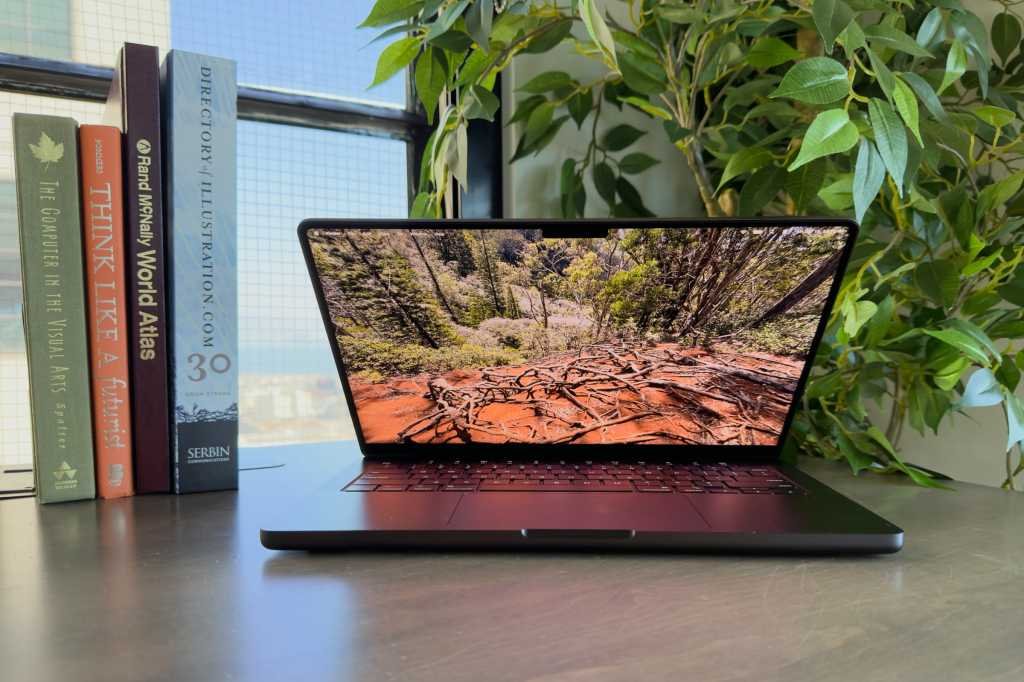In my review of the M5 MacBook Pro, the laptop’s graphics performance stood out. That gives a 35 percent boost in Metal performance over the M4, which is significant. It’s also good for Apple’s Mac marketing, which today includes a greater effort to promote gaming performance on the Mac. The M5’s boost will certainly help.
But when it comes to gaming, the story isn’t how the new Mac performs compared to old ones, but how the Mac fares compared to Windows PCs. So how does the M5 MacBook Pro compare to gaming laptops?
During my testing of the M5 MacBook Pro, among the tests I ran was the Geekbench 6 OpenCL Compute benchmark. Compute benchmark is designed to test a computer’s GPU. OpenCL is a platform-agnostic framework, and while it’s not specifically geared toward graphics (there’s OpenGL for that), it’s designed for parallel computing by GPUs. Below are the OpenCL results for the M5 MacBook Pro compared to two of PCWorld’s top picks for gaming laptops.
Geekbench 6: OpenCL Compute
The results are Geekbench scores. Longer bars/higher scores are faster.
Admittedly, there are several caveats to this comparison. First, it is not a pure graphics test, but this is an indicator of the parallel processing capability of each laptop. Second, Apple promotes and prefers that developers use their Metal API, which is designed for direct GPU access and optimized for performance. In my M5 MacBook Pro review, Geekbench Metal Compute results are presented and highlighted (they are impressive), but Metal is only a Mac technology and can only be used to compare between Macs. Third, it can be argued that framerate data from video games is itself a better data point in the real world, but that is inherently complicated. The Mac games library is notorious for not having current games, and some of the available games use Metal while others do not.
Even when you consider the caveats, the M5 MacBook Pro lags behind the Alienware 16X Aurora, a $1,649 laptop with an Nvidia RTX 5070 GPU, and the $1,099 list price Acer Nitro V 16, which comes with an Nvidia RTX 4060 GPU. The M5 MacBook Pro’s Metal score was 76963, closing the gap, but the PCs still have an edge. (A note from a Geekbench 5 support document states: “While it is possible to compare scores across APIs (eg an OpenCL score with a Metal score), it is important to keep in mind that due to the nature of Compute APIs, the performance difference may be due to more than differences in the underlying hardware (eg the GPU driver can have a huge impact on performance”).
So the Mac’s GPU keeps getting better, but still has some way to go. One thing to keep in mind is that Apple still needs to release the M4 Max and M4 Pro chips, which will almost certainly bring GPU performance even closer to PC GPUs – but that boost will also come at a significant price.
